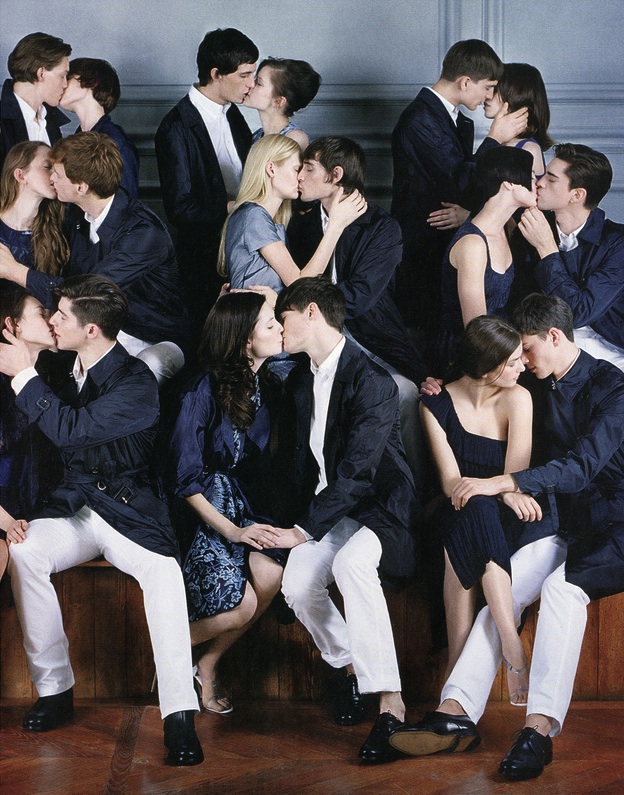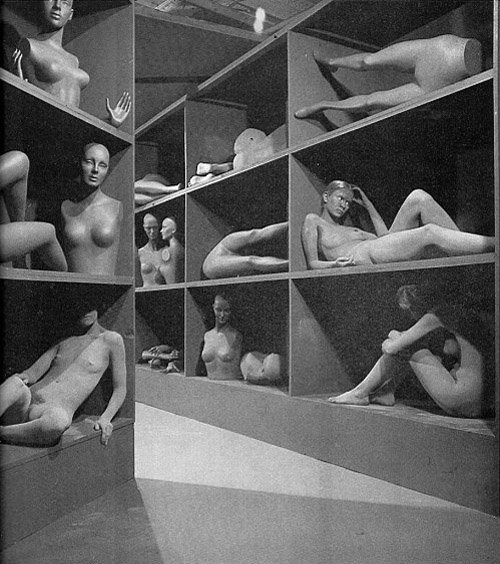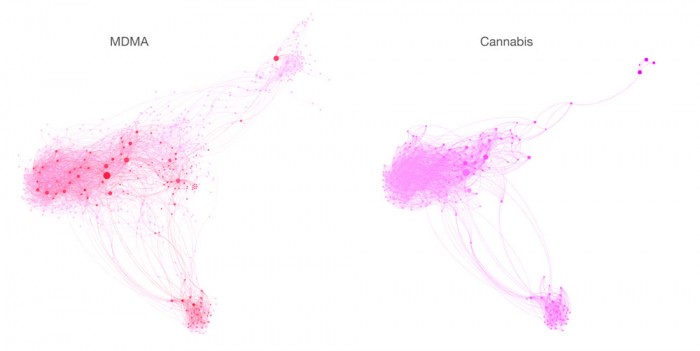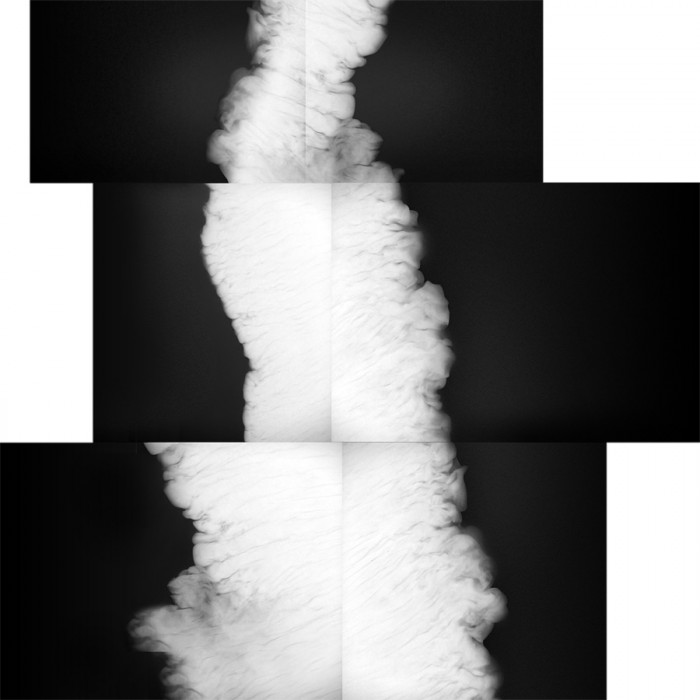In this world, drugs are like advertisements. Things can get complicated. What’s promised may be perceived to be real and the other way round.
Drugs advertise. They direct attention to something. We are told what’s possible. It turns out that everything is. We know that already. It’s good to have a reminder.
However, the “What” (is possible) is never followed by the “How”, because the Logo appears and the 30 seconds are already over.
The system of coordinates is shifted towards and within. What used to be there then becomes here and now. Trajectories deviate from their prescribed pathways. The observer changes the point of view without changing the position. The new information reveals new relationships.
…
Turn off advertising before it ends.
…
Aquascutum Spring/Summer 2009 collection. We see models who are kissing. They feel good. At the very least they like each other, but maybe it’s love. Priming and mirror neurons (source) are doing their job and all those sensations are associated with the Style and the Word of Aquascutum.

As the text evolves further it also becomes evident that the sensations are gradually receding, the magic of the image is dissipating, the letters form the words and the words form the sentences. We’ve seen What was possible, but we don’t know How to make it happen.
A single dose of methylamphetamine (source) was distributed to each of the eighteen models. Sixty minutes passed by. Serotonine is spreading along the pathways of cerebral cortex. Everything that is near becomes the source of sensorial pleasure. The cyborgs are now alive. The fingers are crawling, the lips are swelling, the eyelashes are rustling. They are attracted towards each other led by their heterosexual predispositions.The boys reach towards the girls. The girls reach towards the boys. They want to feel the warmth of the Body. The boundaries are getting blurred. The heart starts to beat faster. The breath is warm. Penetration is not required. Social norms are temporarily suspended. A dichotomy of perception becomes more apparent than usual.
Everything smooth becomes more acute and pronounced. Sensations are rubbing against the sharp corners of perception, they feel both pain and pleasure at the same time.
Every surface – whether it belongs to a physical object or to abstract thought – becomes the source of aesthetic pleasure. Depth is neither required nor necessary. Observing reality we launch into the cosmos. The tentacles of previously disjointed elements are weaving into each other’s flesh. The new combinations create new meanings. The new meanings fill in reality. The sharpness of the newly found perception is attracting the particles toward each other. Serotonin level decreases and the nourishing nectar stops flowing through the newly created structures. The surfaces continue to rub against each other, but there’s nothing left in between. The materials are worn out, the elements break into pieces, everything is falling apart, and wants to cry, but the liquid is already gone. And still, even though everything’s lost, the butterflies are touching the insides and it’s beautiful.

…
Repeat everything above without MDMA.
…
What happened? The human brain has distinct segregated clusters of neurons. Each cluster responsible for a certain experience. The supra network of high-frequency neuronal pathways connects those regions together and glues them into a unified experience. Let’s say that those clusters are like the cities and the high-frequency supra network pathways are like the motorways connecting those cities together. The substance cited above temporarily increases the carrying capacity of the motorways so that the cities can exchange information and feel that they belong to the same country. The feeling of unification is elating but it comes at a cost. The motorways wear out faster, there are some accidents along the way, the arteries get clogged, and after the substance is gone the cities are separated again and it becomes even harder to travel between them. At least now they know of each other’s existence, so what’s left is to leave the memory of the joyful encounter behind and start wandering again.

In the meanwhile, we move on further and into.
If MDMA is connecting the previously segregated regions, then THC does exactly the opposite. A city that functions as one unity may get homogenous at times. After the substance is administered, distinct areas emerge. Mitte is different from Kreuzberg and even more different from Lichtenberg. It’s also quite far to travel, especially towards the evening, especially if we’re in Berlin.
…
It’s already 11pm. I leave towards the outside, it’s warm and quiet. The air smells like fresh lime trees and flowers, I feel good. The regular beat is reaching my ears from every direction, it’s always like that here. I walk towards the park and enter the forest. Hiding faces, a hand reaches out holding a pack of something that contains tetrahydrocannabinol. I give back a blue piece of paper and continue my movement. There’s a bench under a street light. I sit on the bench holding a rolling paper and the contents within.
The fire reaches the very end and it’s on. The vaporized particles enter the body. The neurons are randomly rewired and now I become the observer of my own feelings and thoughts. Removing myself from the necessity to accept everything as it makes my perception much lighter. It’s possible to explore under the surface or slide across the facets of reality reflecting itself and taking nothing really seriously. The multitude is deconstructed into the smallest parts. What used to be heard is now seen. What used to be seen is now felt. The meanings and patterns switch. The clusters gain more detail and precision, the distances between the clusters increase. It’s possible to keep on watching the stars or to continue the journey of self-reflection. It’s possible to get stuck or make love and smoke more later on.
…
Repeat everything that's described above everyday at any moment of time. With or without. Better without so that there's no dependence on.
…

The weekend arrives. The black plastic cards are rhythmically hitting against the reflective surfaces, cutting the white powder into the fine stardust. The paper is rolled, the nostrils are agitated. The substance travels towards the inside, the dopamine level rises, the satisfaction arrives. Even if nothing really happened yet. It’s all good anyway. Excellent, one should say. Nothing needs to be changed, everything should just continue. There are no barriers, there are only possibilities. There is also determination. There is everything that’s needed to realize the determination. The crispy reality is shimmering with the light and sound. The tension knows no limits. The dopamine leaves, some more is needed, the worn-out reality is casting away its shadow…

…
determination, just like when every particle wants it.
…
Lysergic acid diethylamide affects a large number of the G protein-coupled receptors, including all dopamine receptor subtypes, and all adrenoreceptor subtypes, as well as many others. Most serotonergic psychedelics are not dopaminergic. LSD’s agonism of D2 receptors contributes to its psychoactive effects. LSD binds to most serotonin receptor subtypes except for 5-HT3 and 5-HT4. However, most of these receptors are affected at too low affinity to be sufficiently activated by the brain concentration of approximately 10–20 nM. In humans, recreational doses of LSD can affect 5-HT1A (Ki=1.1nM), 5-HT2A (Ki=2.9nM), 5-HT2B (Ki=4.9nM), 5-HT2C (Ki=23nM), 5-HT5A (Ki=9nM [in cloned rat tissues]), and 5-HT6 receptors (Ki=2.3nM).
The psychedelic effects of LSD are attributed to its strong partial agonist effects at 5-HT2A receptors as specific 5-HT2A agonists are psychedelics and largely 5-HT2A specific antagonists block the psychedelic activity of LSD. LSD exhibits functional selectivity at the 5-HT2A and 5HT2C receptors in that it activates the signal transduction enzyme phospholipase A2 instead of activating the enzyme phospholipase C as the endogenous ligand serotonin does. Exactly how LSD produces its effects is unknown, but it is thought that it works by increasing glutamate release in the cerebral cortex and therefore excitation in this area, specifically in layers IV and V. LSD, like many other drugs, has been shown to activate dopamine- and cAMP-regulated neuronal phosphoprotein-related pathways.
Effectively this means that LSD replaces the substances responsible for attention and perception, juxtaposing the neurons against themselves, offering a point of view within the point of view, revealing the multitude to itself, short-circuiting faraway regions, and segregating the clustered ones.
Load the universe into the cannon. Aim at the brain. Fire.
Dimethyltryptamine. DMT. The substance that the brain releases into itself before its death or maybe during the dream. Time is what prevents everything from happening at once. If it contracts, everything happens and happens at once and all at the same time. The black holes pass by, along with the surfaces, memories, thoughts, and ideas… But we are gliding back towards ourselves and into the universe. Life is celebrating itself in every cell and in every breath. The neurons link previously separated flickers into the unified whole, and the world as we know it emerges. Perception perceives itself all at once, there’s nothing left except for the spreading flow. Every particle is imploding and exploding with pleasure and with intensity. Everything changes disappears, reemerges, and disappears again in order to reemerge as something different.
The thread of time links all of this together and produces the illusion of life. Death, then, is when all of this happens at once and everywhere at the same time. “This world is mine”, but only because this very world is so different from the rest that it cannot be somebody else’s. The never-ending explosion reveals itself once again and the convulsing orgasmic Body channels its repercussions.
…
Becoming a vessel and channeling the flow. Synchronized with the entity.
…
This is also available in:
 Русский (Russian)
Русский (Russian)